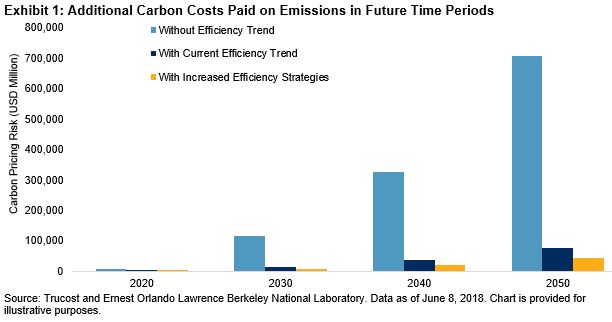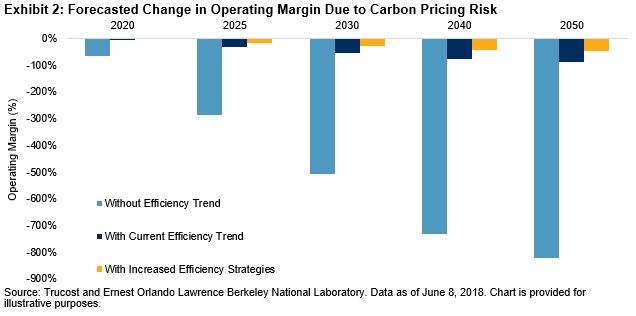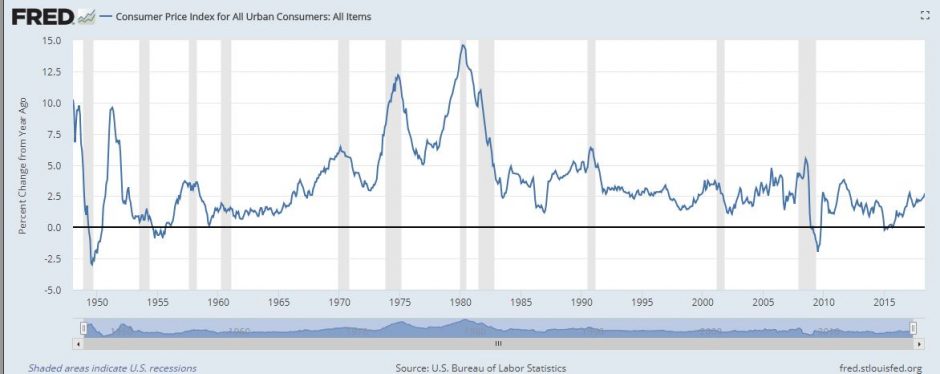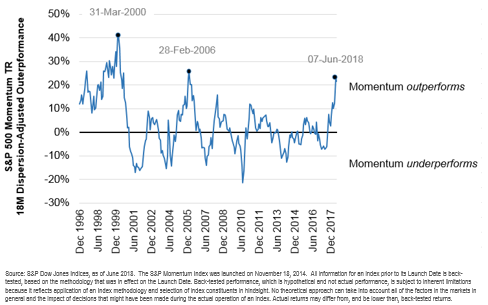The value factor looks to bucket stocks that have inexpensive valuation and trade at a discount to their fundamental value, with the hypothesis that inexpensive stocks should outperform overvalued stocks. Observations in empirical research suggested that the value factor performed best when the economy was in recovery and growth was accelerating from trough.[1]
We recently investigated the performance of different commonly used valuation parameters (see Exhibit 1) by market participants during the period from September 2005 to March 2018 in the Indian market. The analysis was based on hypothetical equal- and float-market-cap-weighted top quintile portfolios that were semiannually rebalanced in March and September.
| Exhibit 1: Valuation Parameters Evaluated in the Analysis | ||
| BACK-TESTED UNIVERSE | S&P BSE LARGEMIDCAP | S&P BSE LARGEMIDCAP
(EX-FINANCIALS) |
| VALUATION PARAMETERS EVALUATED | Sales-to-Price (S/P) | EBITDA-to-EV (EBITDA/EV) |
| Book-to-Price (B/P) | Free Cash Flow-to-EV (FCF/EV) | |
| Trailing Earnings-to-Price (E/P) | ||
| 12-Month Forward Earnings-to-Price (Fwd E/P) | ||
| Operating Cash Flow-to-Price (CFO/P) | ||
| Free Cash Flow-to-Price (FCF/P) | ||
| Dividend Yield (Div. Yield) | ||
Source: S&P Dow Jones Indices LLC. Data from September 2005 to March 2018. All portfolios (except the S&P BSE LargeMidCap) are hypothetical portfolios. Hypothetical portfolios were rebalanced semiannually in March and September. The stock had to be covered by at least three analysts for it to be in the eligible universe for the forward earnings-to-price parameter. Table is provided for illustrative purposes.
Different cyclical characteristics were observed for various valuation parameters in the analysis (see Exhibit 2). For example, the top quintile portfolios for B/P, CFO/P, E/P, Fwd E/P, and S/P significantly outperformed the equal-weighted S&P BSE LargeMidCap portfolio in up markets, but they significantly underperformed in down markets, displaying strong cyclical behavior synonymous with the value factor. In contrast, the top quintile portfolios for Div. Yield, EBITDA/EV, and FCF/EV weren’t penalized in down markets.
| Exhibit 2: Average Monthly Excess Return Versus the Benchmark (%, Based on Equal-Weighted Portfolios) | ||||||||||
| TREND | NUMBER OF MONTHS | B/P | CFO/P | DIV. YIELD | E/P | FWD E/P | FCF/P | S/P | EBITDA/EV | FCF/EV |
| Up | 71 | 1.22* | 0.95** | 0.40 | 0.96* | 1.31** | 0.61* | 1.40** | 0.49 | -0.67 |
| Down | 40 | -2.13** | -1.07** | 0.14 | -0.93* | -1.52** | -0.36 | -1.89** | 0.10 | 1.58** |
| Neutral | 39 | -1.12* | -0.23 | 0.18 | -0.25 | -0.15 | -0.15 | -0.51 | -0.01 | 0.90* |
| All | 150 | -0.28 | 0.10 | 0.27 | 0.14 | 0.17 | 0.16 | 0.02 | 0.26 | 0.34 |
Source: S&P Dow Jones Indices LLC. Data from September 2005 to March 2018. Excess return versus the equal-weighted S&P BSE LargeMidCap portfolio based on total return in INR. **Represents significance level at 1%. *Represents significance level at 5%. Up market trends refer to periods when the S&P BSE LargeMidCap monthly return was more than 1%. Down market trends refer to periods when the S&P BSE LargeMidCap monthly return was less than -1%. Past performance is no guarantee of future results. Table is provided for illustrative purposes and reflects hypothetical historical performance. The S&P BSE LargeMidCap was launched on April 15, 2015.
Exhibit 3 shows the correlation matrix of the top quintile excess return for all the back-tested value parameters. Due to the absence of finance stocks in the back-tested portfolios for EBITDA/EV and FCF/EV, these two parameters have low-to-negative correlations with other factors that were back-tested with the inclusion of all sectors. E/P and Fwd E/P had similar performance characteristics with a high excess return correlation of 91% (Exhibit 3). As the top quintile Fwd E/P portfolio had similar performance characteristics in comparison with the top quintile E/P portfolio over the long term (Exhibit 2) and the stock coverage of the Fwd E/P data was not as broad as of the E/P data, the trailing E/P seemed to be a more effective value parameter than the Fwd E/P.
| Exhibit 3: Correlation Matrix of Equal-Weighted Value Parameters Based on Excess Return Over the Equal-Weighted S&P BSE LargeMidCap (%) | |||||||||
| CORRELATION | B/P | CFO/P | DIV. YIELD | E/P | FCF/P | S/P | EBTIDA/EV | FCF/EV | |
| B/P | – | 78 | 68 | 84 | 87 | 61 | 89 | -2 | -53 |
| CFO/P | 78 | – | 58 | 77 | 79 | 80 | 80 | 16 | -33 |
| DIV. YIELD | 68 | 58 | – | 74 | 67 | 51 | 65 | -1 | -41 |
| E/P | 84 | 77 | 74 | – | 91 | 66 | 78 | 3 | -46 |
| FWD E/P | 87 | 79 | 67 | 91 | – | 64 | 82 | 0 | -51 |
| FCF/P | 61 | 80 | 51 | 66 | 64 | – | 65 | -9 | -25 |
| S/P | 89 | 80 | 65 | 78 | 82 | 65 | – | 0 | -54 |
| EBTIDA/EV | -2 | 16 | -1 | 3 | 0 | -9 | 0 | – | 37 |
| FCF/EV | -53 | -33 | -41 | -46 | -51 | -25 | -54 | 37 | – |
Source: S&P Dow Jones Indices LLC. Data from September 2005 to March 2018. Correlation calculated based on excess total return over the equal-weighted S&P BSE LargeMidCap concept benchmark index in INR. Past performance is no guarantee of future results. Table is provided for illustrative purposes and reflects hypothetical historical performance. The S&P BSE LargeMidCap was launched on April 15, 2015.
Additionally, the top quintile portfolios of a few valuation parameters had a large sector bias from the broad market universe (the S&P BSE LargeMidCap). Most notably, the basic materials sector was overweighted in the top quintile portfolios across all the valuation parameters, whereas the finance sector was most overweighted in the FCF/P top quintile portfolio (see Exhibit 4).
| Exhibit 4: Average Sector Weight Deviation of the Top Quintile Portfolio Versus the S&P BSE LargeMidCap (%, Float Adjusted Market Cap Weighted) | |||||||||
| SECTOR | B/P | CFO/P | DIV. YIELD | E/P | FWD E/P | FCF/P | S/P | EBTIDA/ EV | FCF/EV |
| Energy | -2 | 2 | 12 | 1 | 6 | -6 | 8 | 9 | -1 |
| Utilities | 5 | 1 | 4 | 2 | 0 | -3 | 0 | 3 | 0 |
| Information Technology | -11 | -12 | -6 | -9 | -10 | -8 | -11 | -9 | 8 |
| Telecom | 2 | 3 | -2 | -2 | -2 | 1 | -2 | 5 | 2 |
| Fast Moving Consumer Goods | -9 | -9 | -4 | -9 | -9 | -9 | -9 | -9 | -6 |
| Finance | 15 | 12 | -1 | 12 | 14 | 39 | 1 | -25 | -25 |
| Basic Materials | 13 | 15 | 8 | 15 | 18 | 4 | 15 | 30 | 13 |
| Healthcare | -5 | -5 | -5 | -5 | -5 | -4 | -6 | -5 | 2 |
| Industrials | -4 | -1 | -4 | -1 | -4 | -8 | 6 | 3 | 0 |
| Consumer Discretionary Goods & Services | -3 | -6 | -2 | -6 | -7 | -6 | -3 | -3 | 7 |
Source: S&P Dow Jones Indices LLC. Data from September 2005 to March 2018. The average sector weight deviation calculated versus the float-adjusted, market-cap weighted S&P BSE LargeMidCap portfolio. For the top quintile float-market-capitalization version of the indices, a 10% stock weight capping was implemented, which aligns with the S&P BSE LargeMidCap, where the largest stock had a weight of 11% in its constituent history. Back-tested portfolios for the EBITDA/EV and FCF/EV did not include finance stocks. Past performance is no guarantee of future results. Table is provided for illustrative purposes and reflects hypothetical historical performance. The S&P BSE LargeMidCap was launched on April 15, 2015.
Representation of Public Sector Undertaking (PSU) companies was also different across top quintile portfolios for various valuation parameters. While PSU companies represented almost 56% of the top quintile Div. Yield portfolio, they only accounted for 15% of the S&P BSE LargeMidCap. This indicates that PSU companies have been paying higher dividend yields than other companies in the Indian market.
| Exhibit 5: Average Weight Representation of PSU Companies in Different Portfolios (Float-Weighted Portfolios) | |
| VALUE PARAMETER | PSU STOCK WEIGHTS (%) |
| Div. Yield | 55.7 |
| 54.7 | |
| B/P | 54.7 |
| E/P | 52.1 |
| S/P | 45.9 |
| CFO/P | 42.2 |
| FCF/P | 33.1 |
| EBITDA/EV | 32.9 |
| FCF/EV | 21.1 |
| S&P BSE LargeMidCap | 14.9 |
| S&P BSE LargeMidCap (ex-Financials) | 12.7 |
Source: S&P Dow Jones Indices LLC. Data from September 2005 to March 2018. All portfolios (except the S&P BSE LargeMidCap) are hypothetical portfolios. Average excess weight calculated over the float-market-cap-weighted S&P BSE LargeMidCap benchmark index in INR. For the float-market-capitalization version of the indices, a 10% stock cap was considered. This was in line with the S&P BSE LargeMidCap, where the largest stock had a weight of 11% in its constituent history. Past performance is no guarantee of future results. Table is provided for illustrative purposes and reflects hypothetical historical performance. The S&P BSE LargeMidCap was launched on April 15, 2015.
[1] Ang, Andrew. “The five Ws of style factors.” BlackRock (Dec. 5, 2017).
The posts on this blog are opinions, not advice. Please read our Disclaimers.










